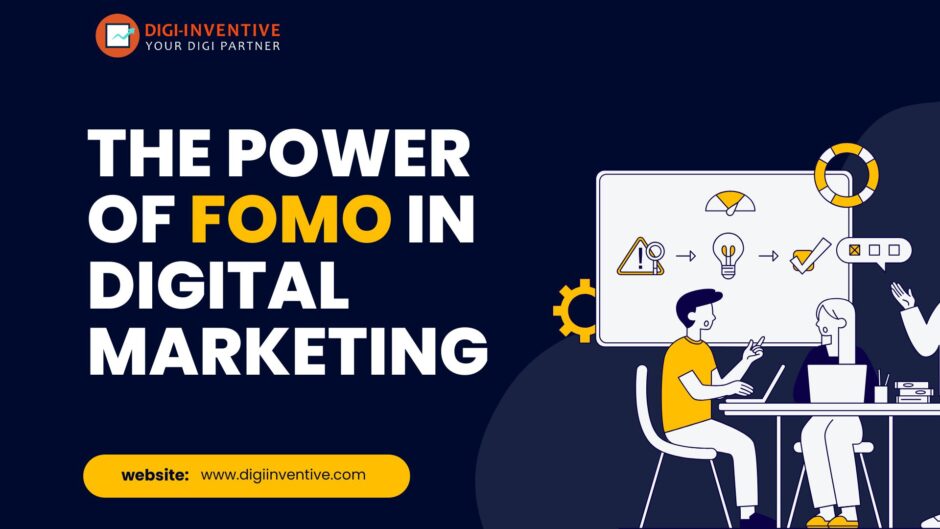Fear of Missing Out (FOMO) in Marketing: Drive Engagement Now
The current global landscape advances at an incredibly relentless tempo. Our daily lives are now saturated with an overwhelming torrent of information, from constant news updates to endless social media feeds. Consequently, amidst this digital deluge, a subtle but undeniably powerful psychological phenomenon has deeply emerged. It’s commonly identified as FOMO, the Fear of Missing Out. This powerful anxiety is no longer confined to the realm of social events and personal gatherings alone. Instead, it now profoundly and directly influences consumer behavior across the entire online landscape. Thus, truly understanding and expertly deploying FOMO’s inherent pull is paramount for successful digital marketing services. It holds the key to not only driving significant engagement but also boosting conversion rates remarkably for your clients.
What Exactly is FOMO’s Role in Digital Marketing?
FOMO is a pervasive anxiety. It stems from the feeling that others are having rewarding experiences. You, however, are not partaking. It’s a desire to stay continually connected. People want to know what others are doing. They fear missing out on exciting events. This also encompasses products, services, and potential opportunities. Social media platforms often amplify this feeling. Seeing others’ highlights fuels personal comparison.
The Psychology Behind FOMO’s Impact on Digital Marketing
Several psychological factors drive FOMO. Firstly, it taps into our innate need for belonging. Humans are social creatures by nature. We desire connection and acceptance. Secondly, it’s linked to the scarcity principle.A perceived limitation boosts an item’s value. This, in turn, generates a sense of urgency. Beyond that, cognitive bias significantly impacts our decisions.Humans tend to be more affected by the prospect of loss than by potential gains. Therefore, the sensation of missing out can truly feel like a major drawback. Lastly, social comparison is a cornerstone, as we continually measure ourselves against others, driving our urge to keep up.
How FOMO Influences Consumer Decisions in Digital Marketing
FOMO dramatically impacts consumer choices. Indeed, people react to time-sensitive offers quickly. They fear losing a great deal. Consequently, limited stock messages spur immediate purchases. For instance, “only 3 left!” creates urgency. Similarly, exclusive access motivates sign-ups. Think of early bird registrations or VIP lists. Furthermore, social proof significantly amplifies FOMO. Seeing others engage encourages similar action. “X people just bought this” acts as a potent trigger. Ultimately, this collective behavior can be very persuasive.

Leveraging FOMO in Digital Marketing Strategies
Smart marketers integrate FOMO strategically. It’s about creating a subtle nudge. Firstly, use urgency tactics. Time-limited sales are highly effective. Countdown timers are visually compelling. “Offer ends in 24 hours!” drives immediate action. Secondly, employ scarcity tactics. Highlight limited stock availability. Mention exclusive product runs. “Only 50 units available globally!” creates desire.
Thirdly, utilize social proof. Display real-time purchase notifications. Show customer reviews and testimonials. “100 people viewing this item now” builds confidence. Moreover, offer exclusive access. Create members-only deals. Launch early bird special offers. “Be the first to know” resonates with a desire for elevated status. Finally, use retargeting with FOMO. Remind users of expiring carts. Highlight items they viewed that are low in stock. This can recapture lost sales effectively.
Real-World Examples of FOMO in Action
Many brands successfully leverage FOMO. Amazon’s “Lightning Deals” use countdown timers. These deals expire quickly. Booking.com displays “only 1 room left at this price!” This impels users to reserve quickly. Spotify’s “Wrapped” campaign uses exclusivity. It provides personalized year-end summaries. Users eagerly share these insights. Additionally, limited-edition product drops create huge buzz. Brands like Nike and Supreme master this. Their releases often sell out instantly. This scarcity builds immense demand. These examples demonstrate powerful results.
Ethical Considerations and Avoiding Pitfalls
While powerful, FOMO must be used ethically. Firstly, transparency is paramount. Don’t create false scarcity. Lying about stock levels harms trust. Secondly, it’s crucial to avoid excessive pressure. Overdoing FOMO can annoy customers. Indeed, it might lead to buyer’s remorse. Thirdly, always focus on genuine value. The offer itself must be appealing. Therefore, FOMO should enhance, not replace, value. Furthermore, it’s vital to respect user privacy. Avoid aggressive, unwanted push notifications. Otherwise, this can quickly lead to unsubscribes. Always provide an opt-out option. Ultimately, misusing FOMO can damage your brand’s reputation long-term. Build trust through honest practices.
Measuring the Impact of FOMO Tactics
Measuring FOMO’s effectiveness is crucial. Monitor your conversion rates. Track the speed of purchases during urgent offers. Analyze engagement rates on time-sensitive content. Additionally, observe push notification click-through rates. A/B test different FOMO messages. Compare results with control groups. This data provides valuable insights. It helps refine your future strategies. Learning from your metrics is key.
The Future of FOMO in Digital Marketing
FOMO will continue to evolve. In fact, personalization will become even more sophisticated. AI can tailor FOMO messages precisely. Specifically, this will be based on individual user behavior. Furthermore, VR and AR present potential new avenues. Envision engaging with a limited-time offer virtually. However, despite these technological advancements, the core human psychology remains constant. The desire not to miss out will persist. Therefore, marketers must stay adaptable and ethical. Leveraging FOMO in digital marketing thoughtfully drives consistent success. Ultimately, it empowers brands to connect more deeply.

